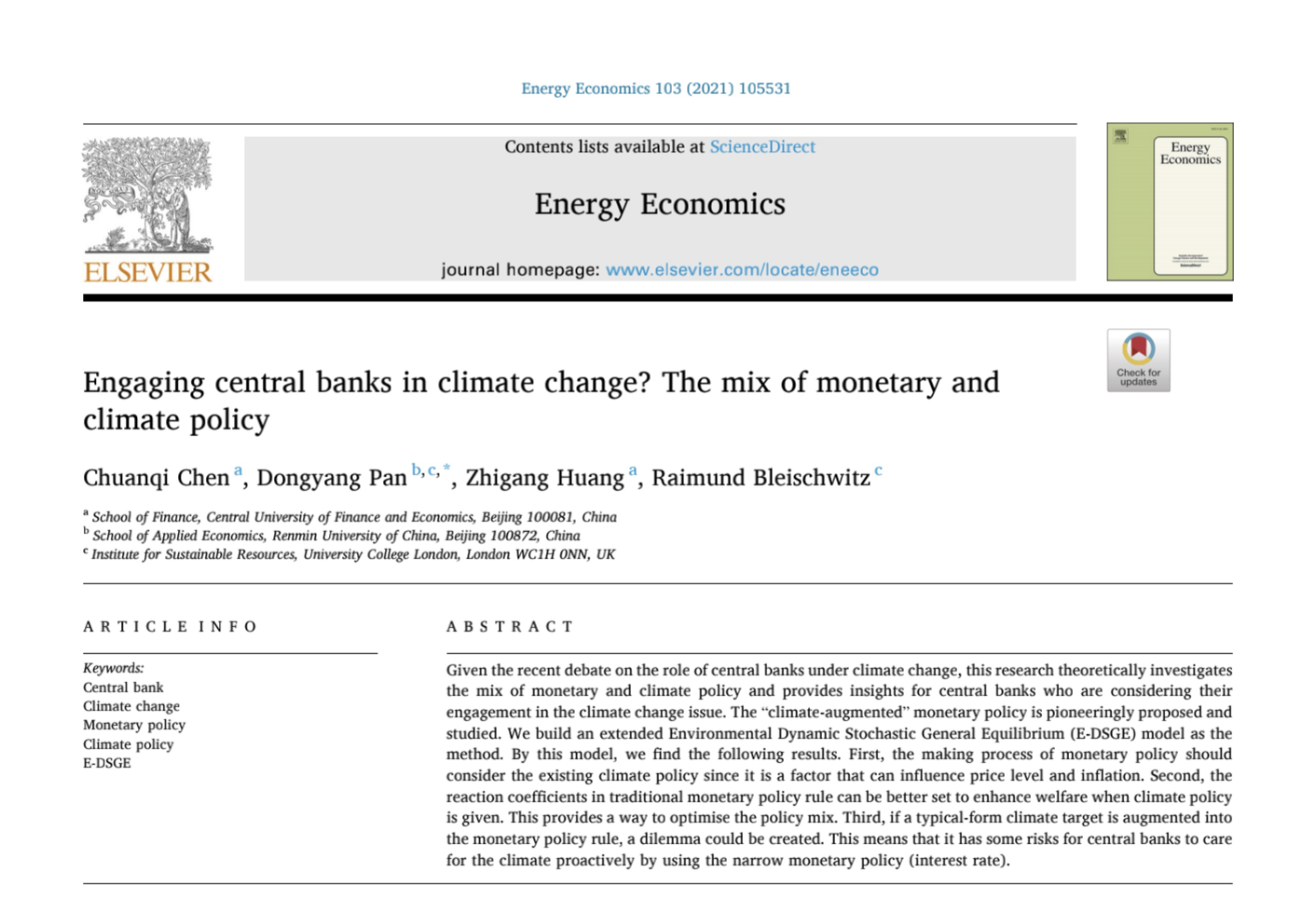Dr. Dongyang Pan recently had a paper published in the Energy Economics. The paper titled‘Engaging central banks in climate change? The mix of monetary and climate policy’, was coauthored with Chuanqi Chen and Zhigang Huang from School of Finance, Central University of Finance and Economics, Raimund Bleischwitz from Institute for Sustainable Resources, University College London.

Abstract
Given the recent debate on the role of central banks under climate change, this research theoretically investigates the mix of monetary and climate policy and provides insights for central banks who are considering their engagement in the climate change issue. The “climate-augmented” monetary policy is pioneeringly proposed and studied. We build an extended Environmental Dynamic Stochastic General Equilibrium (E-DSGE) model as the method. By this model, we find the following results. First, the making process of monetary policy should consider the existing climate policy since it is a factor that can influence price level and inflation. Second, the reaction coefficients in traditional monetary policy rule can be better set to enhance welfare when climate policy is given. This provides a way to optimise the policy mix. Third, if a typical-form climate target is augmented into the monetary policy rule, a dilemma could be created. This means that it has some risks for central banks to care for the climate proactively by using the narrow monetary policy (interest rate).
Other information
Publication Date:2021
Journal:Energy Economics
Journal Issue: 103(2021)
DOI:https://doi.org/10.1016/j.eneco.2021.105531
Read the paper here.